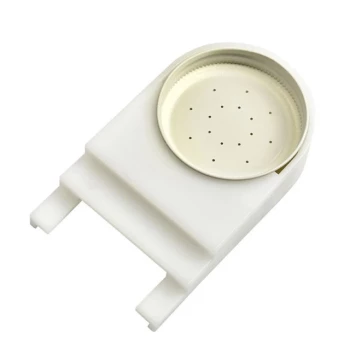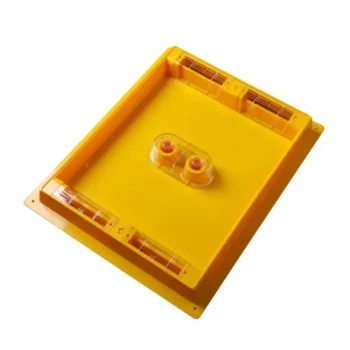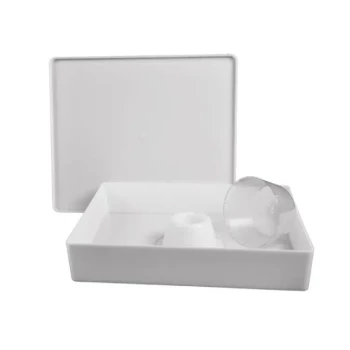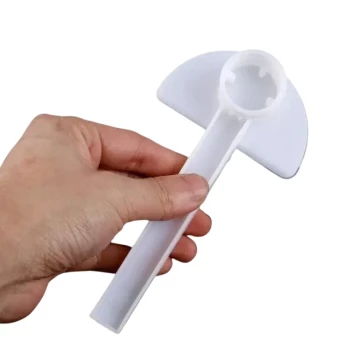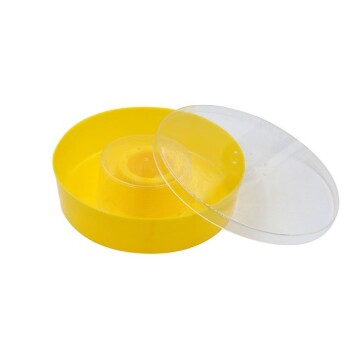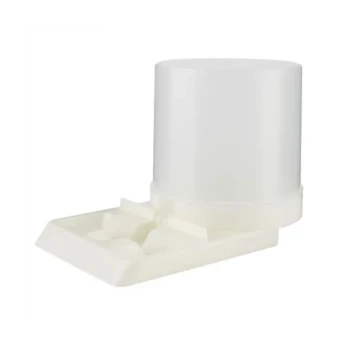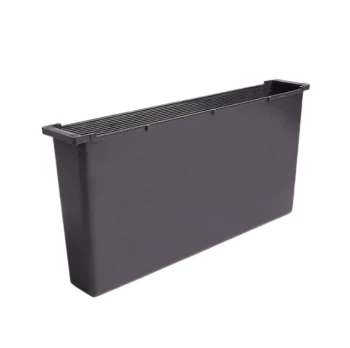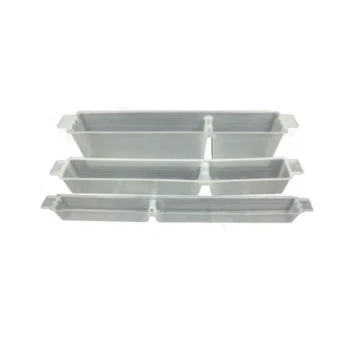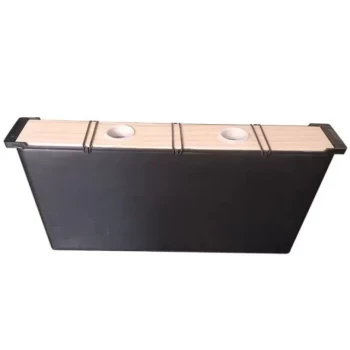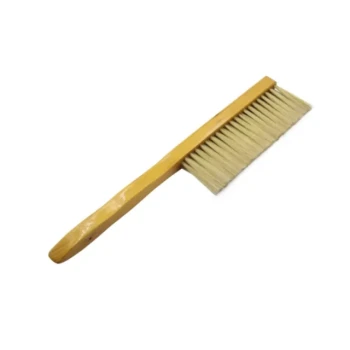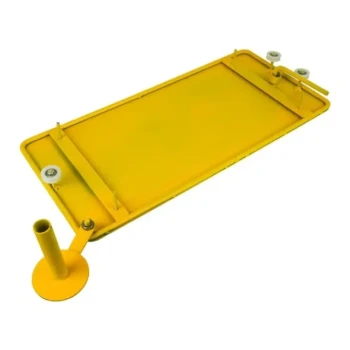Yes, in the vast majority of cases, you must use an inner cover with a top feeder. The inner cover is placed directly on top of the uppermost hive box, and the feeder is then placed on top of the inner cover. This configuration is critical for creating a safe and controlled access point for the bees to reach the food without allowing them to enter and drown in the main syrup reservoir.
The core principle is not just about stacking equipment; it's about managing bee space and bee safety. The inner cover acts as an essential barrier, funneling bees to the feeding area while preventing them from building unwanted comb or drowning in the syrup.
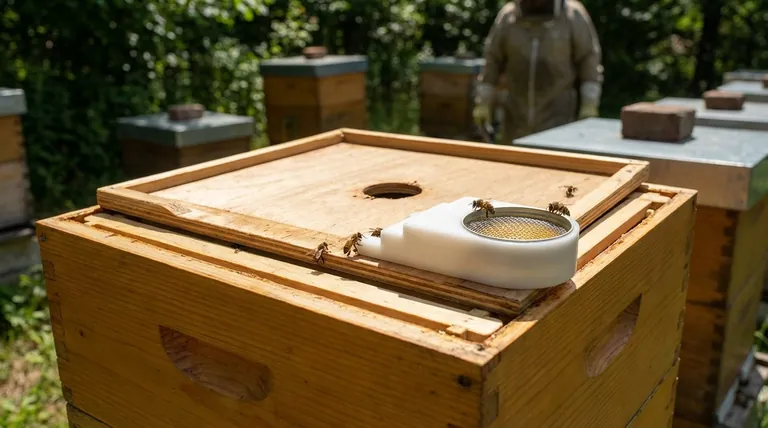
The Role of the Inner Cover in Feeding
Understanding why the inner cover is used is key to successful feeding and colony health. It serves two primary functions in this specific setup.
Creating Correct Bee Space
The rim of the inner cover creates a precise 3/8-inch gap, known as bee space, between the top of the frames and the bottom of the feeder.
Without this space, bees will fill the gap with propolis and burr comb, effectively "gluing" your feeder to the frames. This makes hive inspections difficult and destructive.
Providing Controlled Access
The hole in the center (or sometimes the corner) of the inner cover is the only entry point for the bees. It directs them precisely to the area of the feeder where the syrup is accessible.
This design keeps the bees out of the main reservoir. It allows you to refill the feeder with minimal disturbance and, most importantly, prevents thousands of bees from accessing the large body of liquid and drowning.
Understanding Different Top Feeder Designs
While the principle is consistent, the term "top feeder" can refer to a few different styles. The interaction with the inner cover is similar for most.
Standard Hive-Top Feeders
These are the most common types, often looking like a shallow box with a central area for bees to access syrup. They are designed explicitly to sit on top of an inner cover.
The feeder's access channel, which often contains floats or ladders, lines up directly with the hole in the inner cover below it.
Miller Feeders
A Miller feeder is a specific design of a hive-top feeder that often has two long reservoirs for syrup. Access for the bees is typically via a central or end-walled channel.
Like other hive-top feeders, a Miller feeder requires an inner cover beneath it to provide the correct bee space and controlled access.
The Critical Exception: When to Omit the Inner Cover
While using an inner cover is the standard rule, there is one important exception you must be aware of to avoid making a critical mistake.
Feeders with an Integrated Inner Rim
Some modern top feeders are designed to replace the inner cover entirely. You can identify these feeders by looking at their underside.
If the feeder has its own rim built into the bottom, designed to sit directly on the frames and create bee space, then you do not use a separate inner cover.
Using an inner cover with this type of feeder would create a double gap, which is far too much space. The bees will quickly fill this void with uncontrolled burr comb, creating a mess.
Always Check the Manufacturer's Design
When in doubt, observe the feeder's construction. If it has a built-in rim that would provide bee space, it replaces the inner cover. If it is flat on the bottom, it requires an inner cover.
Making the Right Choice for Your Hive
Properly configuring your feeder is a simple but critical step for effective and safe feeding. It prevents unnecessary stress on both the colony and the beekeeper.
- If you are using a standard hive-top or Miller feeder with a flat bottom: Always place an inner cover on the hive first, then place the feeder on top, aligning the access points.
- If your feeder has its own built-in rim on the bottom: Do not use a separate inner cover; place this type of feeder directly onto the top bars of the frames.
- If you are ever unsure: Default to using the inner cover. It is the safer configuration, as it virtually eliminates the risk of bees drowning in the syrup.
Understanding this simple piece of equipment interaction empowers you to feed your colony safely and efficiently, contributing directly to its strength and survival.
Summary Table:
| Configuration | Inner Cover Needed? | Key Reason |
|---|---|---|
| Standard Hive-Top/Miller Feeder (Flat Bottom) | Yes | Creates correct bee space (3/8" gap) and controlled access to prevent drowning. |
| Feeder with Integrated Inner Rim | No | The feeder's built-in rim provides the necessary bee space; using an inner cover would create excess space. |
Equip Your Apiary with the Right Gear from HONESTBEE
Proper feeding equipment is fundamental to colony health and honey production. HONESTBEE supplies durable, well-designed beekeeping supplies and equipment—including top feeders and inner covers—to commercial apiaries and beekeeping equipment distributors through our wholesale-focused operations.
Ensure your feeding setups are safe and efficient. Contact our expert team today to discuss your wholesale needs and how our products can support the success and scalability of your operation.
Visual Guide
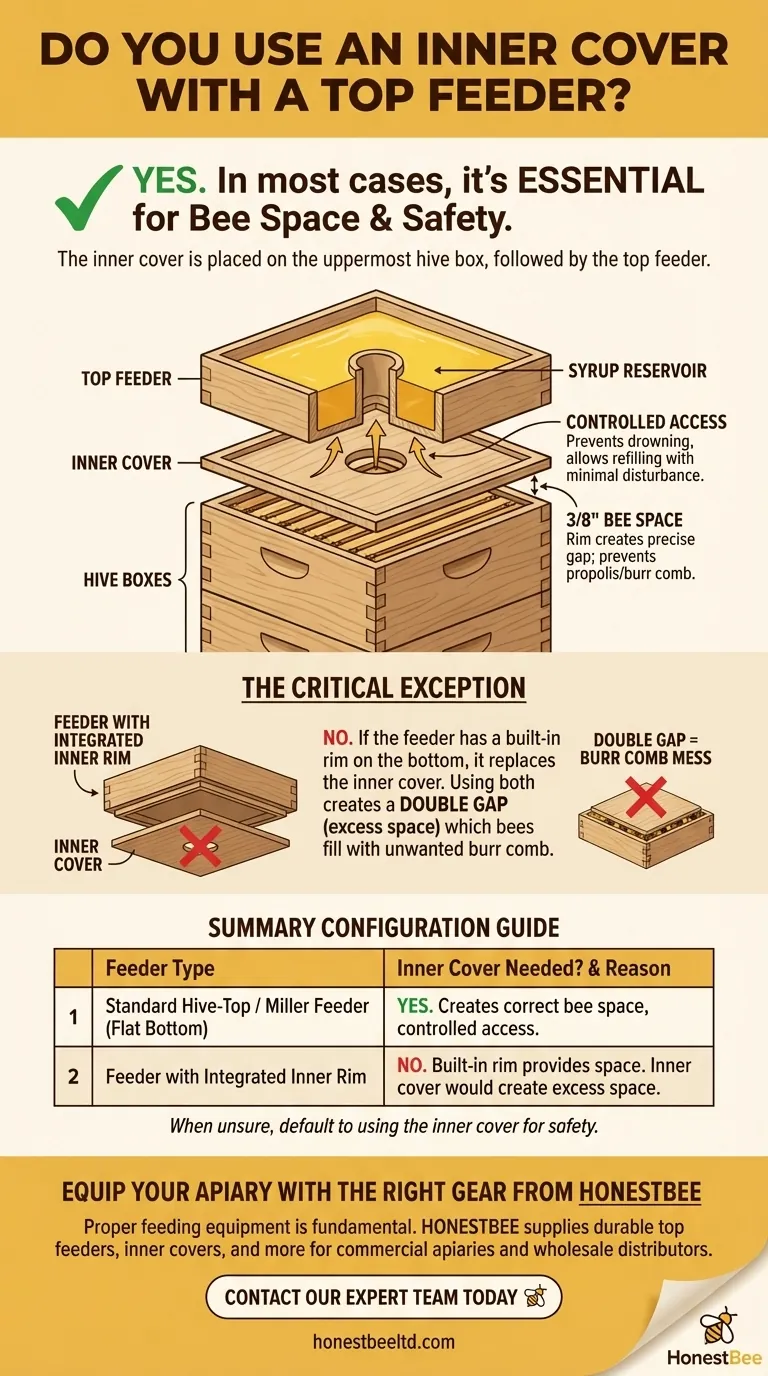
Related Products
- Classic Boardman Entrance Bee Feeder Hive Front Feeding Solution
- Professional Hive Top Bee Feeder for Beekeeping
- Boardman Entrance Bee Feeder Durable Galvanized Steel and Wood Construction for Beekeeping
- Professional Hive Front Entrance Bee Feeder
- HONESTBEE Professional Hive Top Bee Feeder Feeding Solution
People Also Ask
- How can a Boardman Feeder be used to provide water to bees? Avoid These Critical Risks to Your Hive
- What types of bee feeders are available for beginners? Start with the Simple Entrance Feeder
- How to make an entrance feeder for bees? A DIY Guide for Safe & Effective Feeding
- How is the mesh ladder and barrier installed in the feeder box? A Step-by-Step Guide to Prevent Bee Drowning
- How quickly does a medium to strong colony usually empty a feeder? A Beekeeper's Guide to Hive Health
